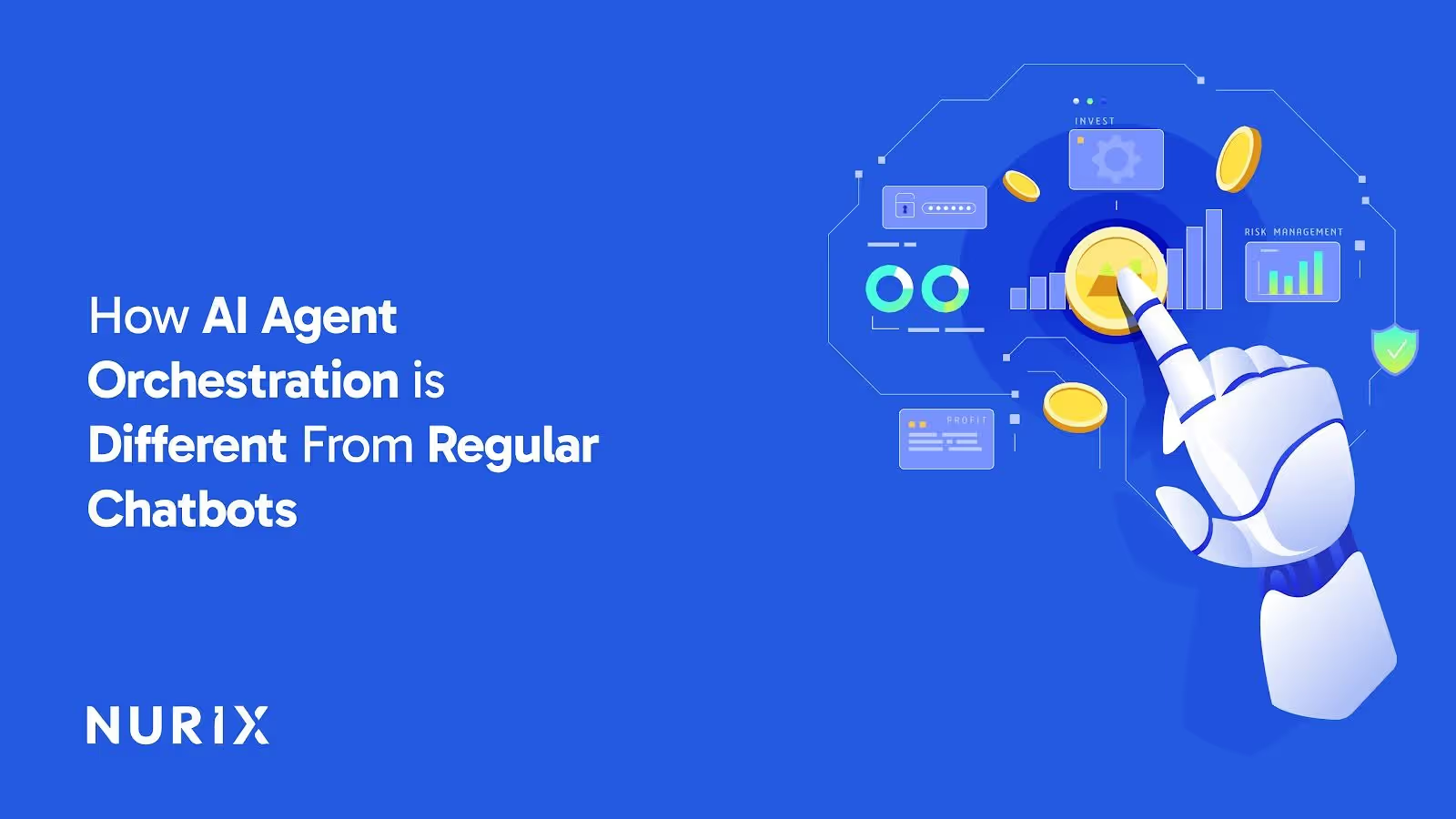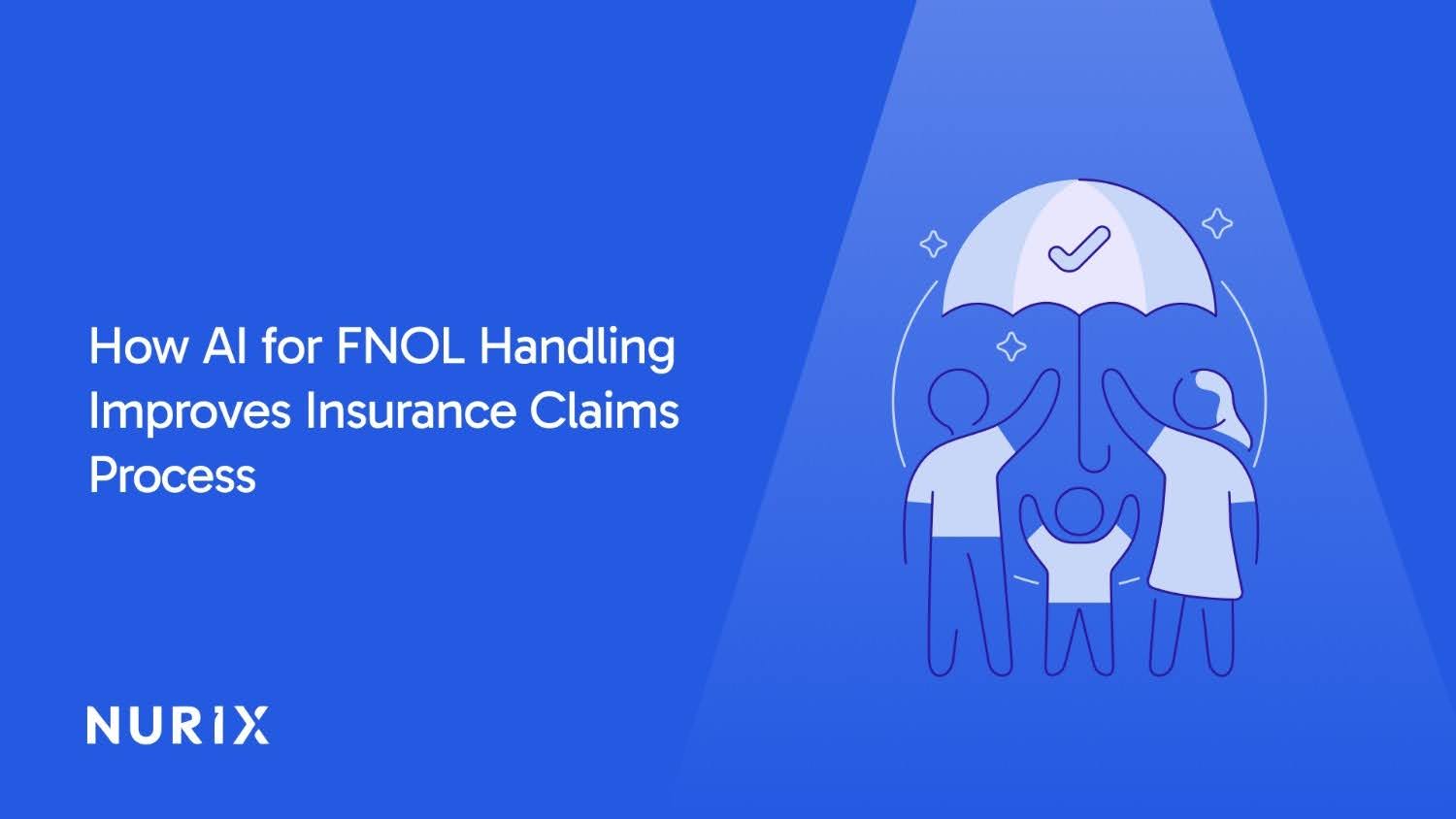Many businesses struggle with customer support when regular chatbots fail to handle complex interactions effectively. Understanding how AI agent orchestration is different from regular chatbots is essential to overcoming these challenges. Unlike single-agent chatbots that follow scripted responses, AI agent orchestration manages multiple AI agents collaborating to handle diverse tasks, route inquiries, and escalate issues with full context.
The agentic AI market is expected to grow by USD 22.27 billion at a 38.7% CAGR from 2024 to 2029, reflecting growing enterprise interest. Knowing how AI agent orchestration is different from regular chatbots helps businesses select the right technology to improve customer experience and operational efficiency.
This guide breaks down the key distinctions and advantages, showing why orchestration offers greater flexibility and depth compared to traditional chatbot systems.
Key Takeaways
- Multi-Agent Coordination Outperforms Single-Task Chatbots: AI orchestration coordinates complex workflows across multiple agents, while chatbots remain confined to scripted, single-task conversations.
- Enterprise Adoption Requires Strong Architecture: Scalability, role clarity, communication frameworks, and monitoring are critical for orchestration success, factors that chatbots lack.
- Future Lies in Self-Healing and Predictive Intelligence: Next-gen orchestration brings predictive workflows, adaptive recovery systems, and collective intelligence for resilience beyond chatbots.
- Nurix AI Elevates Orchestration for CX: Nurix AI delivers proactive, orchestrated customer support with 24/7 coverage, inquiry routing, and smooth human handoff, outpacing chatbot limitations.
What is an AI Agent Orchestration?
AI agent orchestration refers to the structured coordination of multiple AI agents working together to perform complex tasks. It involves managing how these autonomous systems communicate, collaborate, and interact to fulfill objectives that exceed individual agent capabilities. The process manages workflows, task delegation, status tracking, and overall system coherence to deliver collective performance.
Components of AI Agent Orchestration
Here are the key components that make this coordination work effectively:
- Agent Coordination and Task Management: Regulates interactions and assigns tasks among agents while tracking progress to maintain smooth, organized workflow execution.
- Communication and Resource Management: Establishes protocols for reliable information exchange and allocates computational resources to balance workload and responsiveness.
- Lifecycle Control and Monitoring: Oversees agent initialization, operation, and termination, while continuously observing activities for performance tracking and diagnostics.
- Error Handling and Recovery: Detects failures and implements recovery mechanisms to maintain system stability and prevent process interruptions.
- Security and Privacy Controls: Applies authentication, authorization, and data protection to secure agent interactions within the orchestrated environment.
Now that we’ve covered the key parts of AI agent orchestration, let’s look at how it differs from regular chatbots in everyday use.
Sales conversations don’t feel the same anymore; AI agents are quietly rewriting the rules. Discover the shift in how AI agents are changing sales forever.
Top Use Cases Comparing AI Agent Orchestration vs. Traditional Chatbots
Handling complex workflows with multiple AI agents calls for more than simple scripted exchanges. Unlike regular chatbots that respond to one question at a time, orchestrated AI agents work collectively across systems to manage ongoing, interconnected tasks. Here’s a look at key examples that showcase how AI agent orchestration is different from regular chatbots in action:
1. Customer Support Resolution
Multi-stage customer issues require coordination across departments and systems. AI agents handle complex inquiries end-to-end with contextual understanding.
AI Agent Orchestration:
- Autonomous Problem-Solving: Agents coordinate across billing, technical support, and account management systems to resolve complex customer issues independently.
- Context Preservation: Multiple agents maintain conversation history and customer data across all touchpoints, providing a smooth experience throughout the resolution process.
Regular Chatbots:
- Scripted Responses: Chatbots follow predefined decision trees and can only handle questions they were specifically programmed to recognize and answer.
- Session Limitations: Each interaction starts fresh without memory of previous conversations, forcing customers to repeat information for every new session.
2. Financial Services Operations
Banks and financial institutions manage fraud detection, loan processing, and compliance across multiple systems simultaneously.
AI Agent Orchestration:
- Multi-System Integration: Agents access credit systems, regulatory databases, and risk assessment tools to make real-time lending and fraud decisions.
- Regulatory Compliance: Specialized compliance agents work with transaction agents to provide all activities meet regulatory requirements while processing customer requests.
Regular Chatbots:
- Basic Inquiry Handling: Chatbots answer simple questions about account balances, transaction history, and basic banking services using preset responses.
- Limited Decision Authority: Cannot make financial decisions or access multiple systems, typically routing complex issues to human representatives for resolution.
3. Healthcare Patient Management
Healthcare systems coordinate patient care across multiple departments, from scheduling through treatment and follow-up care.
AI Agent Orchestration:
- Care Coordination: Agents orchestrate patient discharge planning by managing documentation, appointment scheduling, medication updates, and follow-up monitoring across systems.
- Real-Time Monitoring: Multiple agents analyze data from bedside monitors, lab results, and wearable devices to provide alerts and clinical decision support.
Regular Chatbots:
- Appointment Scheduling: Chatbots handle basic appointment booking and answer frequently asked questions about hospital services and visiting hours.
- Information Retrieval: Limited to providing static information about medical procedures, insurance coverage, and general health guidance without clinical reasoning.
4. E-commerce Order Fulfillment
Complex order management involving inventory checks, payment processing, shipping coordination, and customer communication across multiple channels.
AI Agent Orchestration:
- Supply Chain Integration: Agents coordinate between inventory systems, payment processors, and logistics partners to handle orders from placement through delivery.
- Dynamic Problem Resolution: When issues arise, agents automatically adjust inventory levels, find alternative products, and communicate changes to customers without human intervention.
Regular Chatbots:
- Order Status Updates: Chatbots provide basic order tracking information and answer simple questions about shipping policies and return procedures.
- Product Information: Handle product inquiries and basic troubleshooting using predefined knowledge base without the ability to modify orders or resolve complex issues.
5. Human Resources Recruitment
Managing complex hiring workflows from candidate sourcing through onboarding across multiple systems and stakeholders.
AI Agent Orchestration:
- End-to-End Recruitment: Agents coordinate candidate sourcing, screening, interview scheduling, and onboarding processes while maintaining context across all hiring stages.
- Multi-Stakeholder Coordination: Different agents handle recruiter tasks, hiring manager communications, and candidate engagement simultaneously while sharing candidate information smoothly.
Regular Chatbots:
- Application Assistance: Chatbots guide candidates through application forms and answer basic questions about job requirements and company policies.
- Interview Scheduling: Handle simple calendar coordination for interviews, but cannot make hiring decisions or conduct complex candidate assessments.
Seeing how these actually work in real situations makes it easier to spot what really sets AI agent orchestration apart from regular chatbots.
Key Differences Between AI Agent Orchestration and Regular Chatbot
When it comes to handling interactions powered by AI, not all systems operate on the same level of complexity or coordination. Some focus on straightforward conversations, while others juggle multiple agents across different tasks simultaneously.
To clarify how AI agent orchestration stands apart from regular chatbots, here’s a closer look at their core differences across several important aspects:
With those differences in mind, it’s worth pointing out some common misunderstandings that can pop up when comparing AI agent orchestration to regular chatbots.
Potential Pitfalls When Comparing AI Agent Orchestration and Chatbots
It’s easy to blur the lines between AI agent orchestration and regular chatbots because both involve automated interactions. Yet, their distinct technical demands and usage contexts often get overlooked.
Take a look at these common pitfalls to keep in mind when drawing comparisons between these two approaches:
- Function Overlap Confusion: Comparing orchestration’s multi-agent coordination to single-agent chatbot functions can lead to misunderstandings about their distinct operational roles.
- Complexity Misinterpretation: Overlooking orchestration’s layered task management may result in underestimating the technical challenges beyond chatbot deployment.
- Communication Scope Misjudgment: Confusing internal inter-agent protocols with chatbot-user exchange can obscure the depth of orchestration's communication requirements.
- Scale and Architecture Mismatch: Treating centralized chatbot systems and distributed orchestration architectures as equivalent overlooks fundamental infrastructure differences.
- Use Case Generalization: Assuming chatbots and orchestrated AI agents serve interchangeable purposes ignores their context-specific functional specializations.
Knowing the pitfalls helps clear the way to focus on what really matters when setting up AI agent orchestration right.
It’s not the agent holding things back; it’s the way the process is built. See why in Your AI Agent Isn’t Broken, Your Workflow Is.
Top Enterprise Considerations for Successful AI Agent Orchestration
Getting AI agent orchestration to perform well requires more than just assembling components; it demands thoughtful planning around how agents interact and grow with the system. Addressing the practical challenges upfront helps avoid bottlenecks and keeps coordination smooth.
Check out these key considerations to keep in mind for building orchestration that holds up under real-world demands:
- Scalable Architecture: Design orchestration systems with scalability to handle increasing agent numbers and workload without performance degradation or resource bottlenecks.
- Clear Role Definition: Define specific functions for each agent within the orchestration to avoid task overlap, inefficiencies, and ambiguity in workflows.
- Reliable Communication Framework: Implement strong protocols that maintain consistent, low-latency data exchange among agents to support coordinated task execution.
- Comprehensive Monitoring: Deploy continuous monitoring tools to track agent health, performance metrics, and workflow statuses for proactive issue detection.
- Security Controls: Establish strict authentication and data protection measures to secure agent interactions and prevent unauthorized access within orchestration systems.
Once the basics are in place, it’s interesting to see where AI agent orchestration is headed next.
Most AI feels familiar, until you see what agents can actually do. Explore the difference in AI Agents vs. Traditional AI: What Sets Them Apart?
Future Trends of AI Agent Orchestration
As AI agent orchestration grows more complex, its capabilities are headed toward new territory that pushes beyond current limits. The path forward involves combining fresh technologies and smarter coordination methods that can handle tasks with greater speed and autonomy.
Here are some trends to watch for in how orchestration will develop and expand its reach:
- Quantum-Enhanced Processing: Advanced quantum algorithms can significantly accelerate complex optimization tasks, allowing AI agents to address challenging coordination problems more efficiently.
- Edge-Native Agent Deployment: Multi-agent systems operate directly at network edges, reducing latency to milliseconds while maintaining full orchestration capabilities across distributed locations.
- Swarm Intelligence Coordination: Collective AI agent networks share knowledge and adapt behaviors dynamically, creating emergent problem-solving capabilities beyond individual agent limitations.
- Collaborative Multi-Agent Learning: Agents learn together across organizations while protecting data privacy, enabling shared intelligence without revealing sensitive information.
- Blockchain-Secured Orchestration: Distributed ledger technology provides transparent and tamper-proof coordination between agents, particularly critical for financial and healthcare applications.
- Cross-Platform Agent Interoperability: Universal orchestration protocols encourage smooth communication between different AI platforms, eliminating vendor lock-in and creating unified agent ecosystems
- Predictive Orchestration Models: AI systems anticipate coordination needs before problems arise, preemptively allocating resources and adjusting workflows based on pattern recognition.
- Human-AI Collaborative Orchestration: Hybrid systems blend human expertise with AI agent capabilities, allowing real-time collaboration where humans guide strategic direction while agents execute operations.
- Memory-Persistent Agent Networks: Advanced storage systems maintain long-term context across agent interactions, allowing complex multi-step processes that span weeks or months without losing continuity.
- Autonomous Agent Code Generation: Orchestration systems create and deploy new specialized agents automatically based on emerging requirements, adapting system capabilities without human programming intervention.
Predictions painted one picture, real-world use paints another. Find out the gap and learn the essentials in AI Agents in 2025: Expectation v/s Reality and Key Types.
Transform Workflows With Nurix AI's Advanced AI Agent Orchestration
Nurix AI delivers conversational AI agents designed for continuous customer support across voice and chat channels. Its platform automates customer interactions, reduces operational costs, and promotes user satisfaction by helping with quick query resolution while maintaining human-like communication.
Key Features
- Conversational AI Agents 24/7: Operates human-like AI voice agents that handle repetitive queries and ticket resolutions instantly, providing uninterrupted customer support.
- Order Support Management: Automates order tracking, updates, returns, and subscription management through voice or chat without creating bottlenecks for human agents.
- Peak and Off-Hours Support: Maintains support availability during high-demand or off-hours by intelligently distributing load and preventing backlogs with proactive engagement.
- Intelligent Inquiry Routing: Detects customer intent via natural language processing and routes tickets with context-rich information automatically to appropriate teams.
- Escalation and Human Handoff: Helps smooth transitions from AI to human agents, preserving conversation history and providing real-time alerts to minimize resolution times.
In Conclusion
Handling customer interactions requires more than scripted replies or isolated AI agents. The real difference in how AI agent orchestration is different from regular chatbots lies in cooperative task execution and contextual continuity.
Nurix AI’s orchestration platform coordinates multiple AI agents working in unison, managing complex workflows and smooth handoffs to human agents when needed. This approach transforms customer support from basic automation to a proactive, multi-layered experience. Businesses seeking a new level of AI-driven engagement can explore Nurix AI’s solutions.
Reach out today to discover how Nurix AI advances support beyond the ordinary chatbot.










